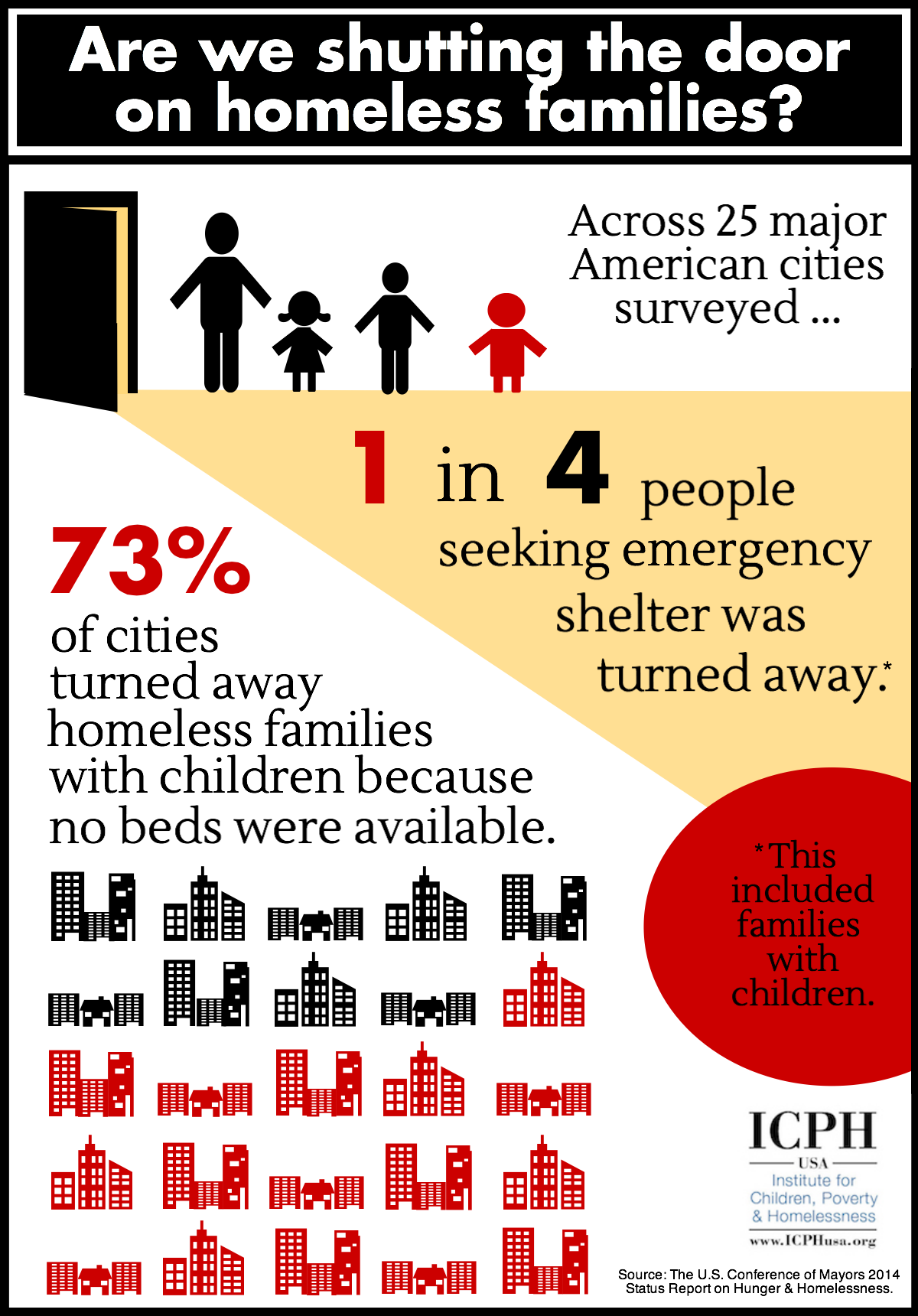The myth that homelessness only pertains to single men and women persists. However, not having a place to call home is also a reality for many young children, youth and families. This week’s infographic, published by the Institute for Children, Poverty & Homelessness, asks an important question: is the door being shut on homeless families? Findings from the infographic are drawn from the hunger and homelessness survey conducted in 25 major US cities.

The infographic states that a quarter of all people seeking emergency shelter were turned away. Shelters in 73% of the cities were forced to turn away homeless families because they were under resourced. Clearly, significant needs are going underserved. Being turned away from a shelter may entail more than not having a place to stay overnight. Other services offered by shelters include food distribution, life skills training, and pathways to long-term housing solutions.
Participating cities were asked to name the three main causes of homelessness among families with children. The most commonly identified cause, mentioned by 83% of the cities, was a lack of affordable housing. The rising cost of housing and a lack of affordable housing have also been identified as precursors to family homelessness in Canada. Other causes identified by participating cities, and relevant to the Canadian context, include growing unemployment and poverty.
In order to address family homelessness, shelters need to be adequately equipped with the necessary services to meet the needs of both adults and children. Examples of supports for adults include counseling services for spouses who have experienced domestic abuse, as well as educational and training services for adults struggling to find work in a tough labour market. For children, this may mean making toys and rooms available for children to play in, as well as study areas for older children in school.
When we begin to think about how supports and services should be designed for homeless families, it’s important to keep in mind that not all families are the same. Having tailored services targeting subpopulations of homeless families would be more effective than a one size fits all solution. For example, consider the needs of adolescent homeless mothers. Motherhood during adolescence carries with it a unique set of challenges that are not faced by older families.
In Canada, it is more difficult to come across figures about family homelessness. However, this does not mean that the problem does not exist in Canada. According to the State of Homelessness in Canada: 2013, there are many warning signs of risk of homelessness for families. For instance, it is estimated that there are roughly 380,600 households living in severe housing need, meaning these households live in poverty and spend more than 50% of their income on rental housing. Results from the National Shelter Study found that the number of children and families using shelters in Canada is increasing over time. The Transition Home Survey, of services for abused women and their children, found that in 2014 on April 16, 338 women and 201 accompanying children were turned away from shelters in Canada. The most common reason why women and children were turned away was due to the shelter being full. Some other reasons for turnaways may be: “a community may lack shelters that can accommodate children, family shelters may not admit males over 16, adult shelters may not be able to admit youth under a certain age, there may be a lack of shelters that can accommodate those with certain disabilities, etc.”. It is important that family homelessness is closely monitored so that needs are identified and addressed.
